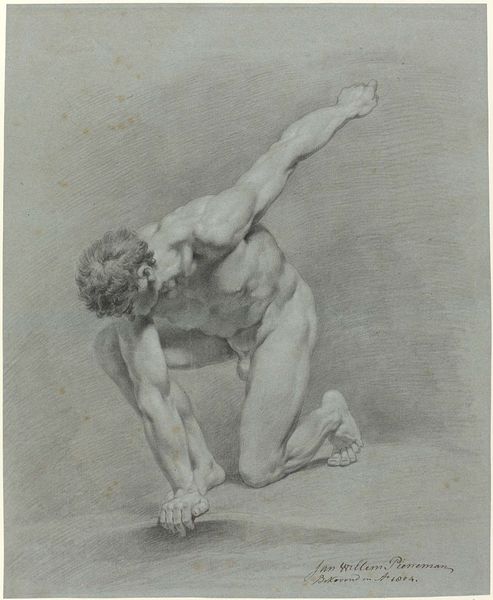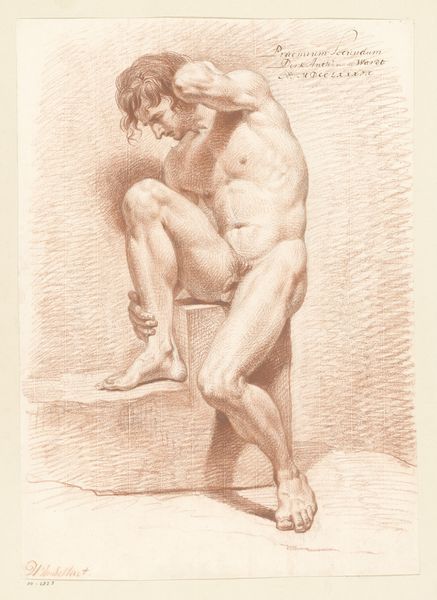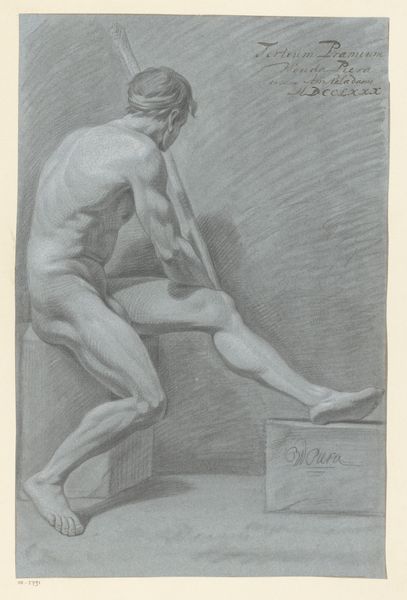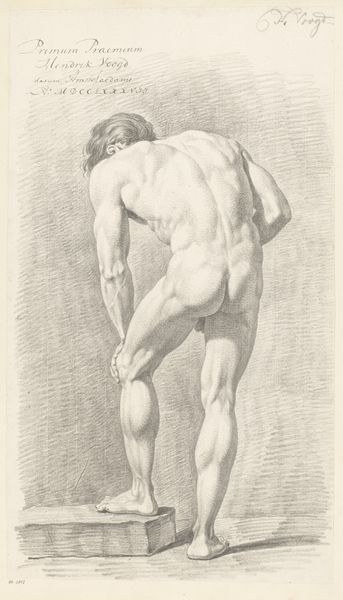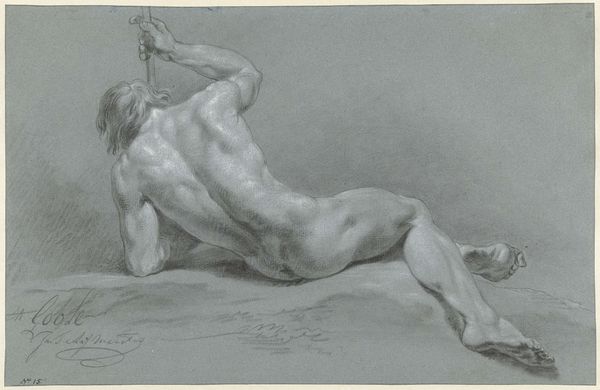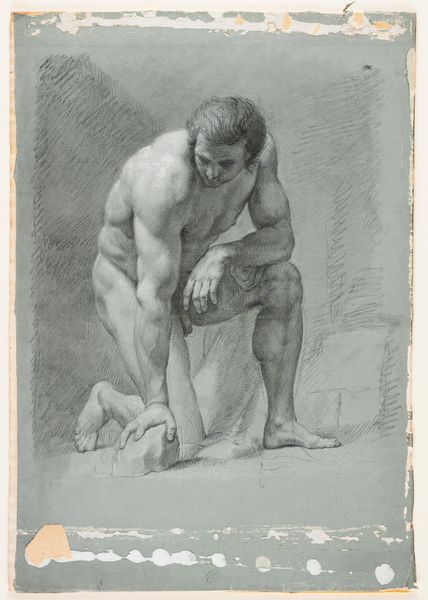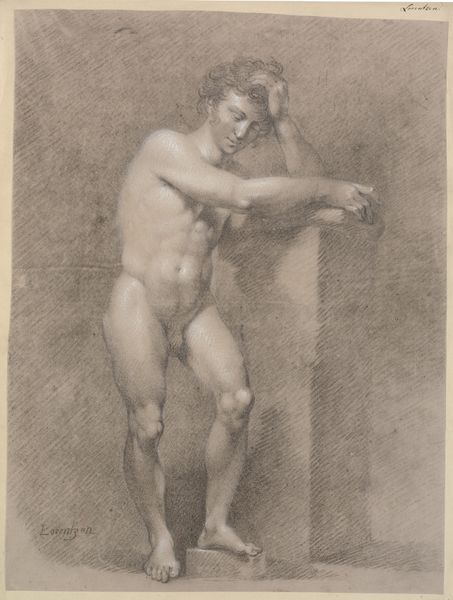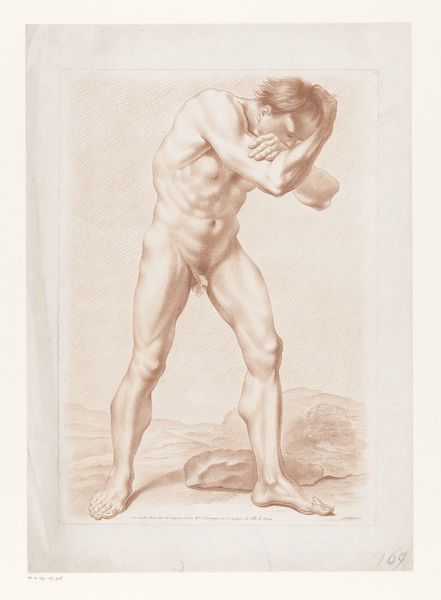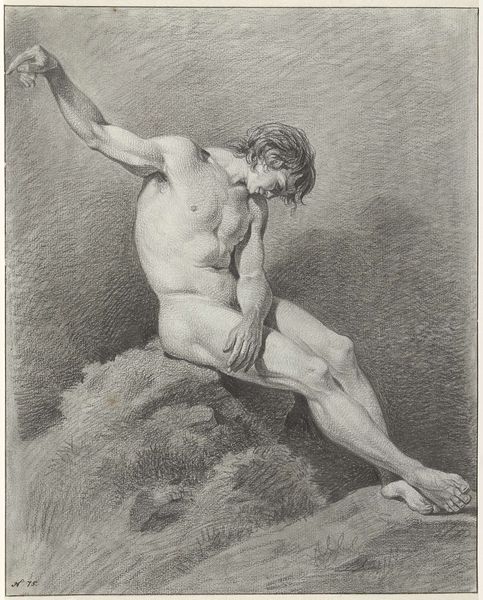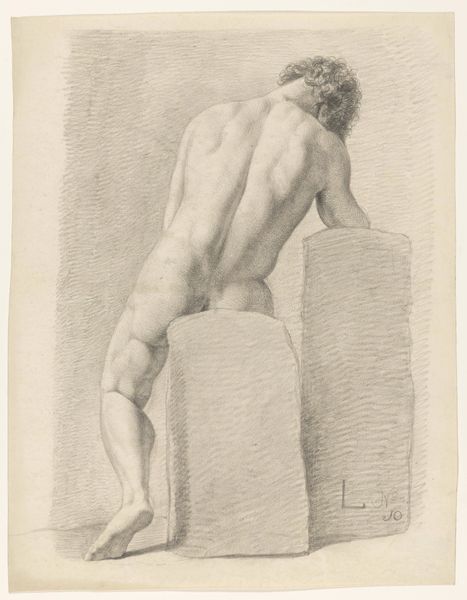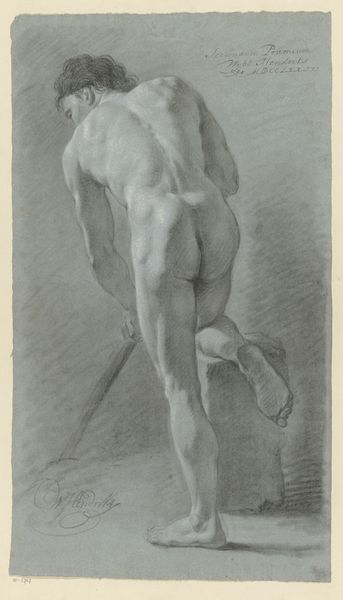
Knielend mannelijk naakt, van voren gezien (1e prijs 1804) Possibly 1804
0:00
0:00
drawing, pencil
#
pencil drawn
#
drawing
#
pencil sketch
#
charcoal drawing
#
figuration
#
pencil drawing
#
pencil
#
portrait drawing
#
pencil work
#
academic-art
#
nude
Dimensions: height 473 mm, width 330 mm
Copyright: Rijks Museum: Open Domain
Curator: This intriguing drawing is called "Knielend mannelijk naakt, van voren gezien," which translates to "Kneeling Male Nude, Seen from the Front," created possibly in 1804 by Johann Joseph Schwachhofer. It appears to be rendered primarily in pencil. Editor: The somber tonality immediately strikes me. The figure’s posture, bent so low, combined with the restricted palette conveys a sense of burden or perhaps even defeat. Curator: Indeed. The artist’s process reveals quite a bit about the art world then. The academic style underscores a specific approach to artistic training that was very labor intensive, based upon copying and imitation. Look at the intense study of musculature and form. It served as a building block for aspiring artists to demonstrate their command over material and technique. Editor: And it reminds me of classical iconography, though inverted. Figures in such poses were sometimes seen in religious scenes to signify piety, but here, the posture suggests vulnerability, as if stripping away heroic narratives associated with male nudes from antiquity. The light catches the man's back just so... almost cruelly. Curator: That contrast you noted— between traditional iconography and this rather despondent figure— is striking. Think about how such drawings, especially academic studies, became valuable commodities. Reproductions circulated, affecting artistic standards but also generating a new mode of viewership among collectors and art lovers who might never encounter grand salon paintings in person. Editor: So even the pencil strokes carry that weight. The image itself seems almost like a sign, loaded with cultural echoes of earlier heroic ideals, yet presenting something far more grounded and fragile. It’s almost melancholic. Curator: Perhaps this connects, also, to new scientific developments at the time. The precise draughtsmanship mirrors the emphasis on observation, collection, and classification inherent in the Enlightenment worldview. The figure is carefully measured and described on paper. Editor: I appreciate seeing past the image's mere academic roots. It's not just about copying an ideal but perhaps hinting at internal struggles beneath the classical veneer. It suggests both beauty and something much heavier, almost haunting. Curator: Indeed. Reflecting on its original role versus how it affects us today gives you a sense of shifting attitudes toward human form, skill, art, and labor across two centuries. Editor: Absolutely. Looking at this image now, I realize how symbols constantly evolve. We’re always renegotiating their meanings based on the new material and emotional contexts we live in.
Comments
No comments
Be the first to comment and join the conversation on the ultimate creative platform.
